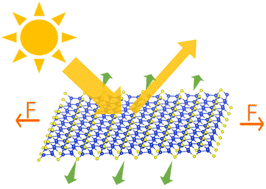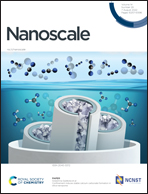Two-dimensional Si2S with a negative Poisson's ratio and promising optoelectronic properties†
Abstract
Two-dimensional materials with a negative Poisson's ratio, known as auxetic materials, are of great interest owing to their improved mechanical properties, which enable plenty of advanced nanomechanical devices. Here, by first-principles swarm-intelligence structural search methods, we predict a thermodynamically stable Si2S monolayer, which has a puckered 2D lattice in which the S atoms are adsorbed on the top of a distorted tetragonal silicene layer. The puckered 2D lattice makes the Si2S monolayer exhibit in-plane negative Poisson's ratios of −0.05 and −0.069 along the x and y directions, respectively. Moreover, electronic structure calculations reveal that the Si2S monolayer is a semiconductor with a quasi-direct band gap of 1.81 eV, which can be converted into a direct gap semiconductor of 1.43 eV by applying a low tensile strain (∼2%). The Si2S monolayer has a large visible light absorption coefficient of 105 cm−1. The hole (electron) mobility is 200 (81) cm2 V−1 s−1 along the y direction, 3.4 (1.5) times that along the x direction, comparable to MoS2. Moreover, the Si2S monolayer has the good ability of oxidation resistance. We provide a possible route to experimentally grow a Si2S monolayer on a suitable substrate such as the Cu(100) surface. The versatile properties render the Si2S monolayer potential for advanced application in nanodevices.



 Please wait while we load your content...
Please wait while we load your content...